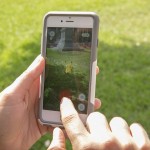Meteor showers are the precise situation when there’s no need for a telescope or binoculars to have a “star gazing” experience. All you need to do is, sit back, relax, and enjoy the show. So far this year we’ve already had 5 of them. Here’s a list describing what makes each one so great and unique. Hopefully, you will never want to miss this again.

The Quadrantids
It is the first meteor display of the year. The “shooting stars” were expected each night from Jan. 1st until Jan. 6. But it reached its peak activity rate in the morning of Jan. 4 (specifically at 3 am). It is very intense (producing over 100 meteors per hour) but -unfortunately- quite short. The thing about this meteor shower is that not everyone can get the chance to see it -which means, that you have to be at the right place and at the right time-. The public from The United States of America and Canada were the “lucky ones” this time. These were the places where this phenomenon reached its maximum activity.
The meteors from the Quadrantids appeared to radiate from a spot in the sky in the middle between the last handle star of “the Big Dipper” asterism and the head of “Draco, The Dragon”.
Fireball Season
Northern spring is the best time to catch a glance of some fireballs. Basically, fireballs are some especially bright meteors. The “Fireball season” occurs for a few weeks around the March equinox. This means, that during this time of the year, the rates (of fireballs “encounters”) go as high as they can be.
In general, 2016 seems to be a very good year for Fireballs. According to the American Meteor Society, there has been “more than 910 fireball” reports made through their online “Fireball Report Program”, since January.
Lyrids
The Lyrids are known for the -very uncommon- flood that could escalate its rate up to 100 per hour. This fact is, what makes this event so interesting to check out -meaning: no one can actually know what will happen exactly.
Usually the Lyrids meteor shower occurs from April 15 until the 25th. The peak of this shower only lasts a day. Unfortunately this year wasn’t the best for this kind of shower. Its apex matched with the April 2016 full moon. Which means that the Lyrids made an appearance in a moonless night. Making it almost impossible to see more than just a couple of them.
Eta Aquarids
What is great about the Eta Aquarids is that you get the chance to see it the day before and after its peak. This year’s predicted pinnacle took place the 6th of May, around dawn. Luckily, the moon turned new soon before the peak. Making the sky dark enough to appreciate all the details that this shower had to offer.
This shower was “over-the-top”. Especially in the Southern Hemisphere. Getting to see, two to three times more meteors than the Northern one.
Delta Aquarids
Unlike any other shower, the Delta Aquarids doesn’t have a precise “peak day”. Instead, it happens almost every day from late July until early August. The best hour to see these medium-speed meteors is around two hours before dawn.
The Delta Aquarids rates are -also- higher in the Souther Hemisphere. Approximately, the maximum number of meteors produced by this shower is about 10 to 20 an hour.
Perseid
This year we are looking at an outburst perseid meteor shower expected for August 12. And it is still going on! Normally its rates go around the 100 meteors per hour, but this year it is very likely to double that number. This kind of shower tend to increase -slowly but surly- into a peak. And thats the reason why, in some locations (with partially dark sky and almost none city lights) it was possible to gaze a few meteors, in the morning of August 13.
The Perseid is known to be the favorite meteor shower of the Northern Hemisphere. If you haven’t had the opportunity to indulge your eyes with this extraordinary -almost “mind-blowing” event, don’t worry. Because there are many other meteor showers left throughout the year. So make sure you know the dates and you will never have to miss one again.



Loading…